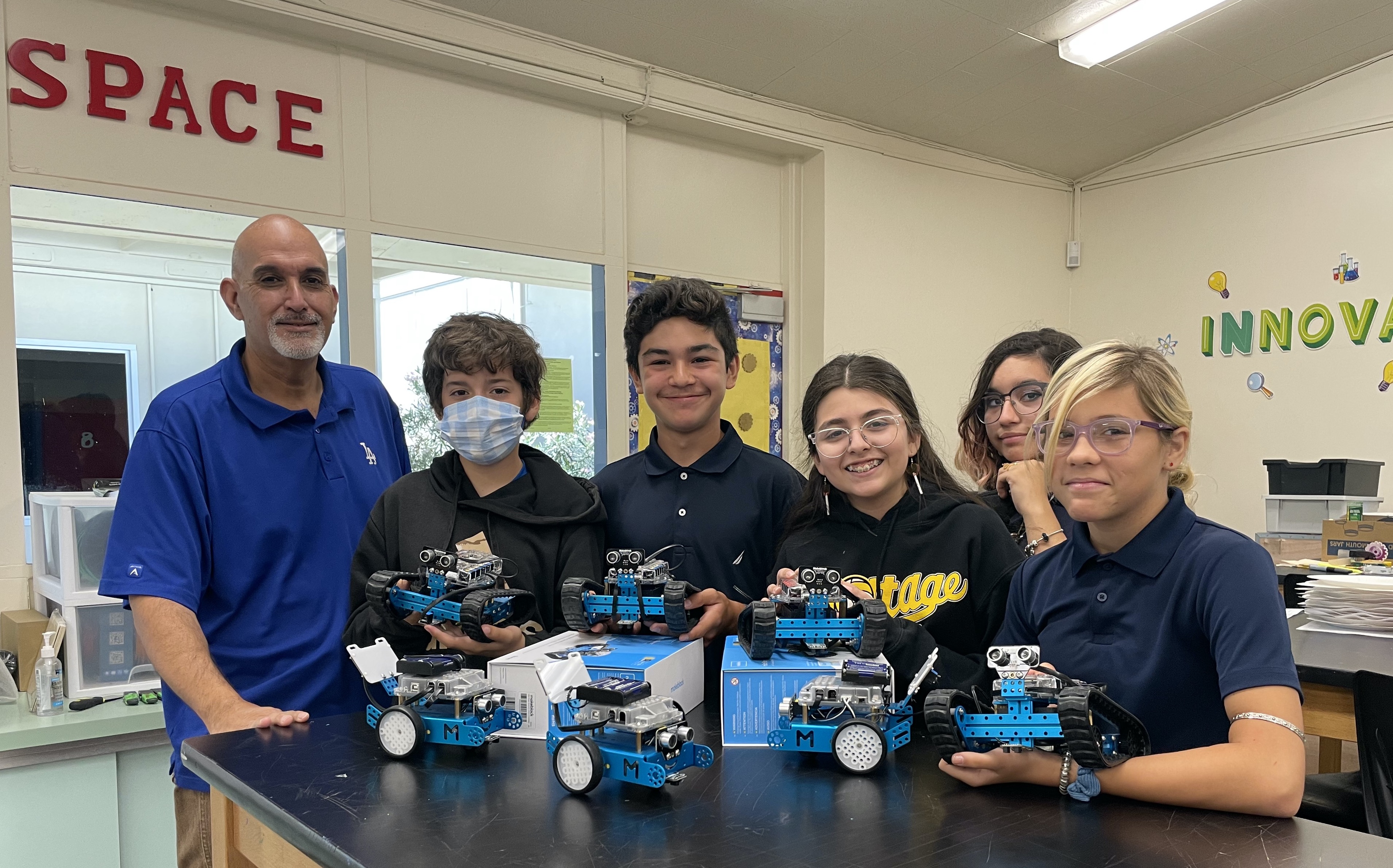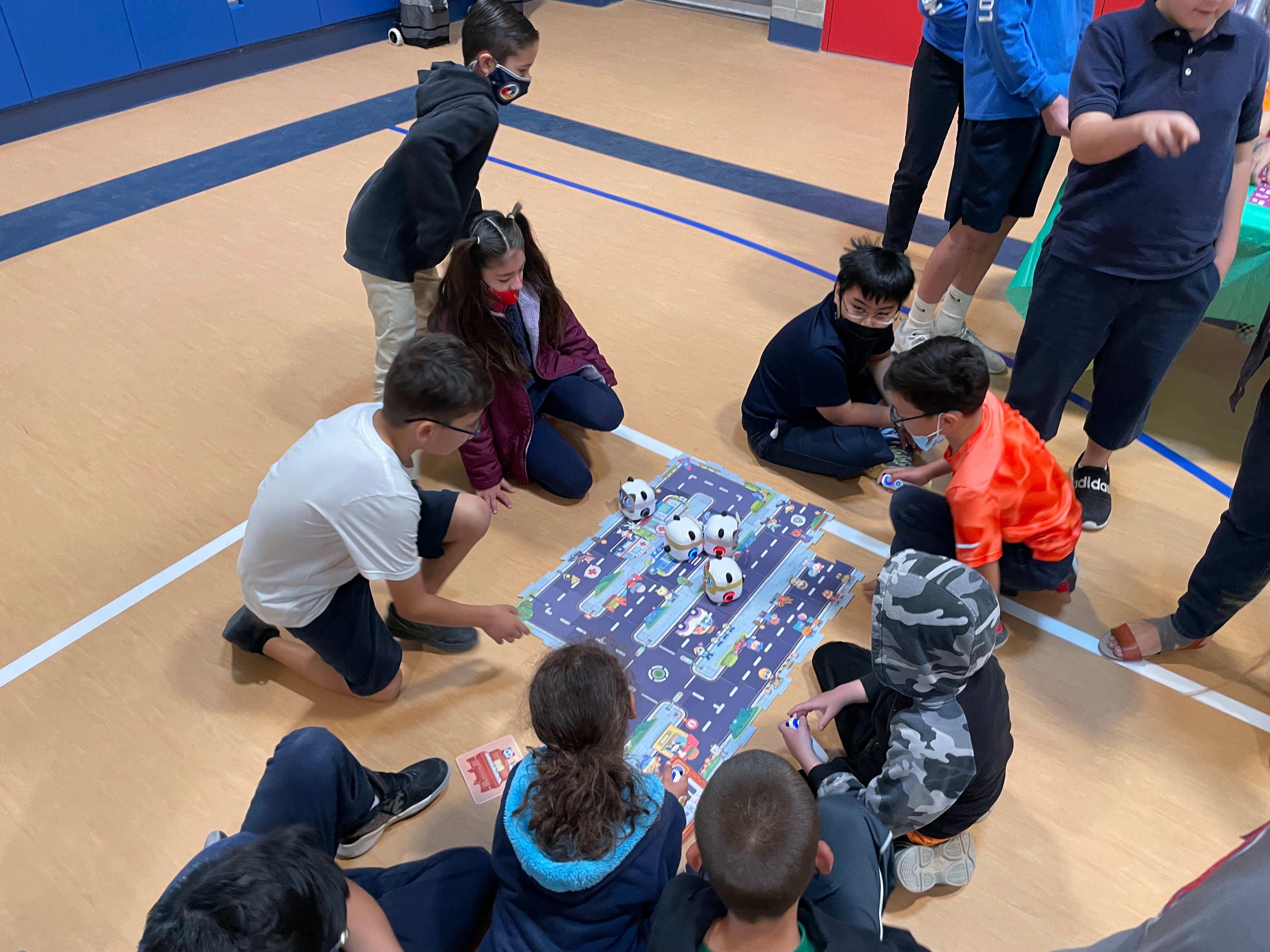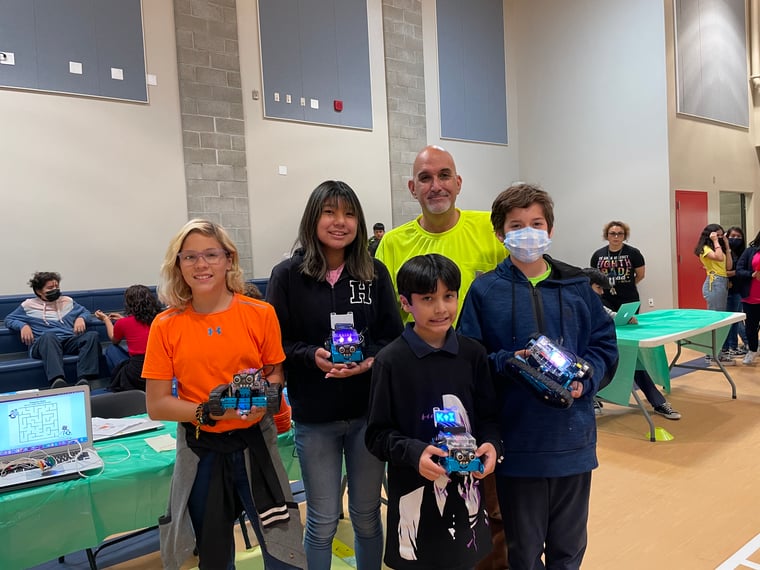
De Anza Magnet School Empowers STEM Thinkers
Hear from STEM Educator, Ascension Reyes, how De Anza Magnet School empowers STEM thinkers.
Q: Can you tell me about yourself and your background in education?
A: “I’ve been teaching for 28 years. I’ve taught different grade levels. I’ve been teaching 4th through 8th grade for the last 9 years, and I have been teaching STEM and tech electives at De Anza STEM Magnet in El Centro. There have been a variety of grade levels I have taught over the years. A lot of that has been spent doing edtech or STEM.”
Q: How would you describe your STEM program?
“We are a K-8 school. My main role is to provide the STEM elective for our 7th and 8th grade students and also what we are calling innovation time for K-2 grade. We do a rotation weekly in the morning. Throughout the whole school we have STEM Friday. On STEM Friday we give teachers opportunities for kids to explore different STEM topics and activities. This year we decided to have an emphasis computer science and robotics. In my 7th and 8th grade classroom, I’ve always done a lot of computer science and robotics. Most recently in the last 2 years I’ve been using a lot of the Makeblock products.”
“All last year we did HaloCode and got heavy into that. We added mbots and every class in grades 3-8 added Codey Rocky. A couple months ago we got Rangers. K-2 used mTiny. We are trying to spread out computer science and robotics throughout the whole school. We incorporate storytelling and art with mblock and scratch. We added a lot of other products too that are more in the science realm. Anything from exploring sound, electricity, bottle rockets. Generally, that’s what we are doing. School wide, my role is to guide teachers through it. We are the support for the rest of the staff.”

“We didn’t know how the younger kids would react. With K-2, when we first introduced it was like, wow. They were amazed. They never had the opportunity. We mixed in other things, science, and art. The kids kept asking when we would do robots again. A lot of positivity came from parents saying that kids like the robotics and computer science part of it. It wasn’t a surprise that would happen. I think that is what we lack, kids exploring things like that. Give them the opportunity. When students know it is their week to come to innovation time, when we do a hands-on project whether its computers and art or other design, kids are always enthusiastic. It’s the same with older kids. They can create, paint, make lights flash, and move with electronics.”
“It is what motivates them I think to want to be here in class. Teenagers can have their moods when just sitting and reading all the time. Some other programs that we have, the format is more self-paced reading and video. It’s not as popular. It is with more exploration with a purpose we get more engagement. That’s what I see. 3D printing catches the attention. We have a big robotics showcase tomorrow. We had a gymnasium built. We are going to showcase all the robotics things that kids have been doing. Even for teachers to see what other grade levels have done as well. It’s to show everyone what each other is doing.”

“Things were more difficult 9 years ago when I first got here. The enthusiasm for STEM was not as much. In the last year and half, we discovered – because of the pandemic – it opened avenues for funding. That allowed us to put supplies in the hands of teachers right away and give training on-site that was more personalized. Once we did that, we started giving the teachers enough supplies targeting computer science and robotics. There were class sets of things. Teachers were more open to it. They only had to implement. They didn’t have to request and order sets. Here is full set and everyone has an opportunity. Once we did it that way, we saw a lot more buy in. We did have some reluctance, but we have a lot of good support. Some of our veteran teachers who are not as tech savvy, they are relying on some of the newer teachers that are at ease with tech. Part of it is because we have had a lot of new people that are open and received the idea. We are having good success in last year and a half.”
Q: What are some of the activities that your students are participating in?
A: “My 8th graders try to get through some kind of instruction with a micro controller. Another little girl created an animatronic sunflower where the sunflowers rotate on their own. Some boys that are working on a cloud project, they are sending data on weather sensors to the cloud. Younger kids, they are doing toothpick bridges, one class is growing radishes outdoor. We’re trying to do as much as we can to have a variety of experiences at this school. Before the pandemic, we had a STEM expo which was a take on a traditional science fair without judging. It was just to showcase what kids were doing in classrooms. We are wanting to bring that back, hopefully towards the end of the year. Every classroom can show what they have been doing.”

Q: What strengths and skills are you seeing students develop from the program?
A: “Problem-solving. The reason for that is, a lot of times, it’s interesting. I didn’t used to get as many calls throughout the day. It’s not bad, it’s good. Kids are working and coding and getting stuck. Kids are pestering teachers. They want to figure it out. Teachers will send them to me, and I will look and help and they will look again. I am seeing the desire to persevere to find the result and the solution to that problem. There’s a lot more of that. Before, there was not the opportunity for exploration. Now we are embedding those opportunities for kids to explore. That builds perseverance.”
Q: How would you say the program is impacting student confidence in STEM?
A: “I think what teachers are seeing is we have fewer absences on Friday. They know that STEM Friday time is their time. There is no pressure. Be here and we are going to have fun and explore. The positive is we are seeing kids more willing to be here.”
Q: How do you think STEM prepares students for the future and why is it important?
A: “I think people think STEM means everyone will go into a traditional STEM career like a doctor or astronomer. I like to emphasize that there is STEM in a lot of places. You can look at baseball or football stadium. We talk about some of the calculations that go into measuring out a baseball field or amusement park. We emphasize that STEM is everywhere. That’s why it is important at least the way we do it. It doesn’t have to be traditional. You can find STEM in everything. We don’t pigeonhole kids into a specific career. It’s good. We do it in a way that is more global. Science is part of it. Even fashion, we do wearable projects where kids will sew into jackets and shoes. STEM can be found in many diverse places. When they grow up and they think where to go in life, they can have a wide view.”

Q: How has EDforTech supported you in meeting your STEM goals?
A: “We started maybe two years ago. Before the pandemic I was looking for a new product. I stumbled upon HaloCode and saw videos. I was searching around and made an inquiry about price. The initial person I started with is who I am still in contact with now. Ryan got back to me within the hour. I ask my principal if we could get HaloCodes and we did. Every time any little snag would happen Ryan would get right back to us and check on me. He was very upfront about everything. That is what is important. That’s how EDforTech has taken care of us. We designed a makerspace for another school district and they went with EDforTech, and they are pleased, happy, and using products for some of their other programs. We are doing the same thing here in our district. Once we started revamping some things, we have been using EDforTech. Anytime we ask for a quote, we don’t have to wait even 24 hours. They communicate. If we ask a question, they will check on how things are going for us. Most places don’t do that. Most places, you buy and don’t hear from them again. The good thing with EDforTech is it feels like they are our vendor. That’s what’s good. Our district STEM Coordinator is in communication with them all the time. You don’t get that much, not even from Apple.”

STEM education encourages the next generation of engineers, technologists, scientists, and artists. Our team of STEM experts are here to support you in implementing meaningful K-12 learning experiences that empower students and educators. Request more information today about how you can incorporate STEM learning at your school and increase student achievement.
Related Articles
STEM Q&A: Mark Keever, STEM Educator
Q: Can you tell me about yourself and your background in education?NAA22 Convention: EDforTech After School Programs
From March 20th through March 22nd, EDforTech had the exciting opportunity to attend the NAA22...EDforTech Corp
Our mission is to help schools prepare the next generation of engineers, technologists, and scientists who will be solving the world’s problems. We believe in creating learning environments that engage every student, promote critical thinking and problem solving. We support schools in implementing STEM programs by providing world-class STEM learning environments that serve the needs of a wide range of teachers and students.



